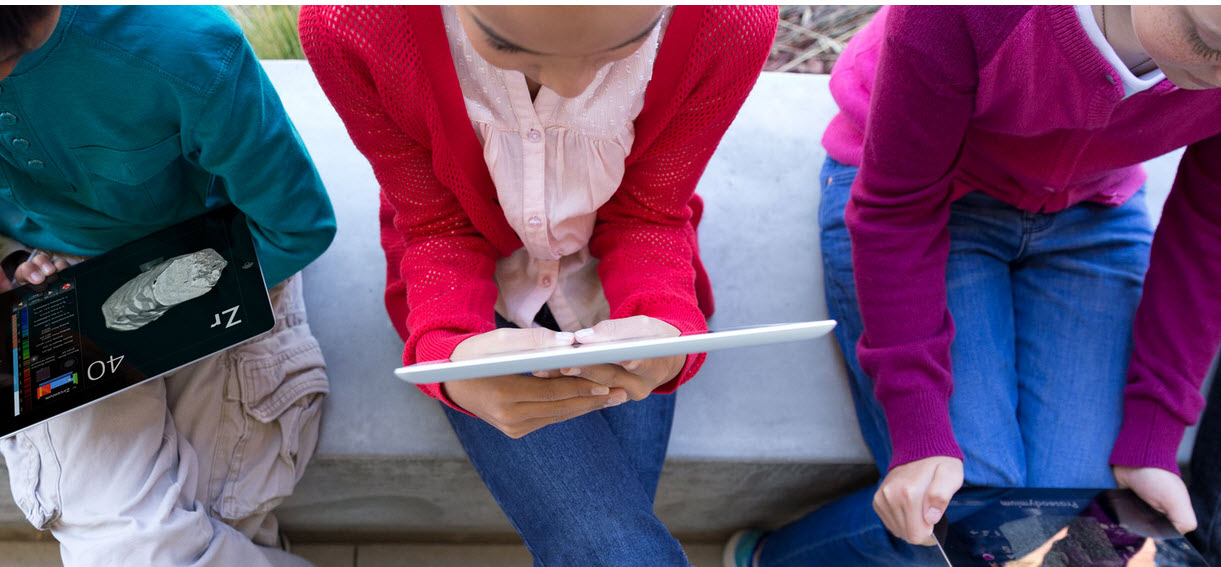Are young people losing the ability to read emotions?
August 25, 2014

(Credit: Apple Inc.)
You’ve been prevented from accessing your smart phone, computer, tablet, and TV for five days. Do you (A) totally freak out and go into withdrawal or (B) deal with it and regain some of your lost social skills, like reading emotions?
UCLA scientists found that sixth-graders who went five days without even glancing at a smartphone, television, or other digital screen chose option B. They did substantially better at reading human emotions in an experiment than sixth-graders from the same school who continued to spend hours each day looking at their electronic devices.
Children’s social skills may be declining as they have less time for face-to-face interaction due to their increased use of digital media, according to a UCLA psychology study.
“Decreased sensitivity to emotional cues — losing the ability to understand the emotions of other people — is one of the costs [of digital media in education],” said Patricia Greenfield, a distinguished professor of psychology in the UCLA College and senior author of the study . The displacement of in-person social interaction by screen interaction seems to be reducing social skills.”
The research will be in the October print edition of Computers in Human Behavior and is already published online.
The experiment
The psychologists studied two sets of sixth-graders from a Southern California public school: 51 who lived together for five days at the Pali Institute, a nature and science camp about 70 miles east of Los Angeles, and 54 others from the same school. (The group of 54 would attend the camp later, after the study was conducted.)
The camp doesn’t allow students to use electronic devices — a policy that many students found to be challenging for the first couple of days. Most adapted quickly, however, according to camp counselors.
At the beginning and end of the study, both groups of students were evaluated for their ability to recognize other people’s emotions in photos and videos. The students were shown 48 pictures of faces that were happy, sad, angry or scared, and asked to identify their feelings.
They also watched videos of actors interacting with one another and were instructed to describe the characters’ emotions. In one scene, students take a test and submit it to their teacher; one of the students is confident and excited, the other is anxious. In another scene, one student is saddened after being excluded from a conversation.
Improvements in just five days
The children who had been at the camp improved significantly over the five days in their ability to read facial emotions and other nonverbal cues to emotion, compared with the students who continued to use their media devices.
You can’t learn nonverbal emotional cues from a screen in the way you can learn it from face-to-face communication,” said lead author Yalda Uhls, a senior researcher with the UCLA’s Children’s Digital Media Center, Los Angeles. “If you’re not practicing face-to-face communication, you could be losing important social skills.”
Students participating in the study reported that they text, watch television and play video games for an average of four-and-a-half hours on a typical school day. Some surveys have found that the figure is even higher nationally, said Uhls, who also is the Southern California regional director of Common Sense Media, a national nonprofit organization.
Abstract of Computers in Human Behavior paper
- Preteens spent five days in a nature camp without access to screens and were compared to controls.
- Both groups took pre- and post-tests regarding nonverbal emotional cues.
- The experimental group’s recognition of cues improved significantly over the control.
- Time away from screen media, with increased social interaction, may improve comprehension of nonverbal emotional cues.
A field experiment examined whether increasing opportunities for face-to-face interaction while eliminating the use of screen-based media and communication tools improved nonverbal emotion–cue recognition in preteens. Fifty-one preteens spent five days at an overnight nature camp where television, computers and mobile phones were not allowed; this group was compared with school-based matched controls (n = 54) that retained usual media practices. Both groups took pre- and post-tests that required participants to infer emotional states from photographs of facial expressions and videotaped scenes with verbal cues removed. Change scores for the two groups were compared using gender, ethnicity, media use, and age as covariates. After five days interacting face-to-face without the use of any screen-based media, preteens’ recognition of nonverbal emotion cues improved significantly more than that of the control group for both facial expressions and videotaped scenes. Implications are that the short-term effects of increased opportunities for social interaction, combined with time away from screen-based media and digital communication tools, improves a preteen’s understanding of nonverbal emotional cues.